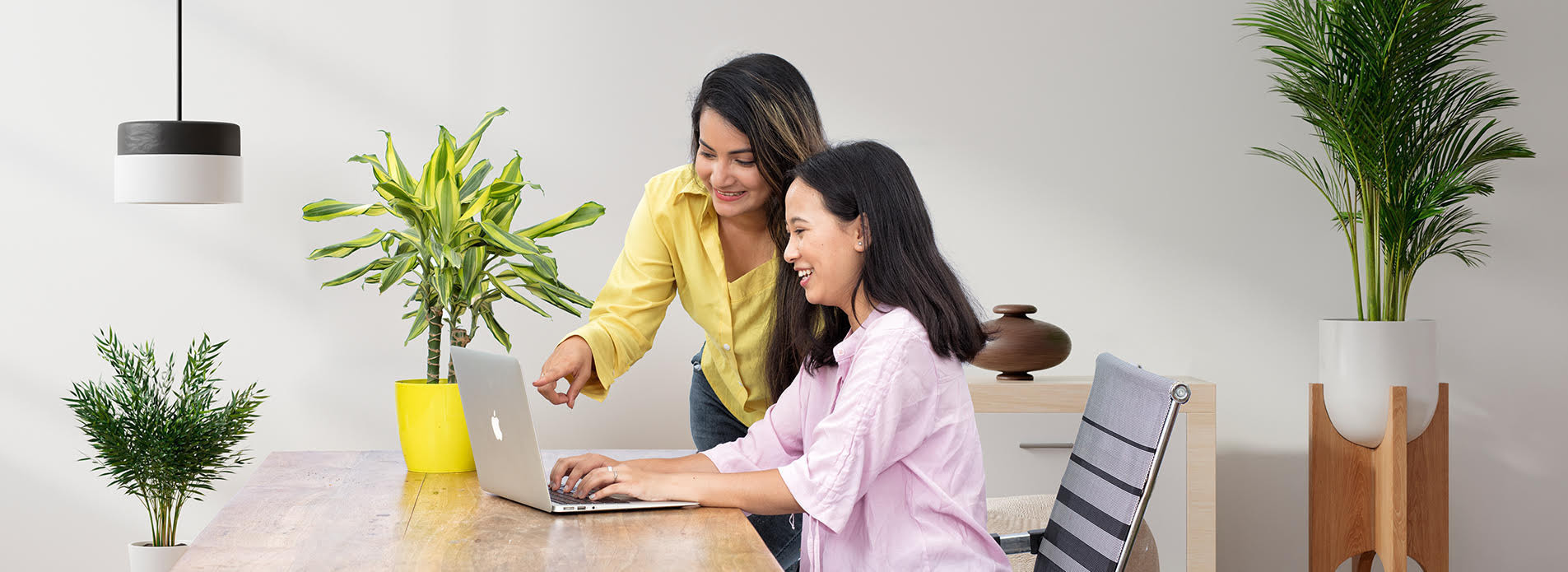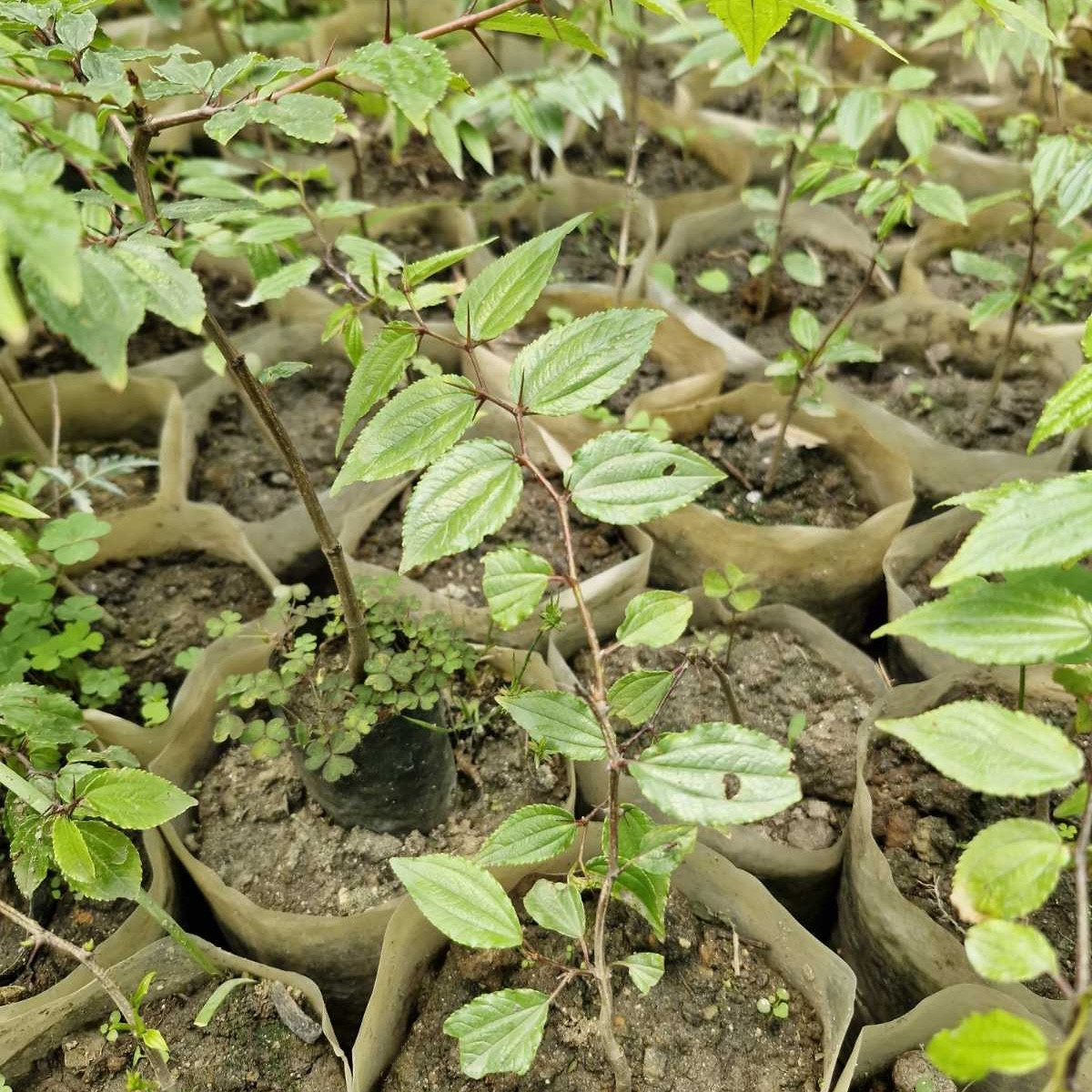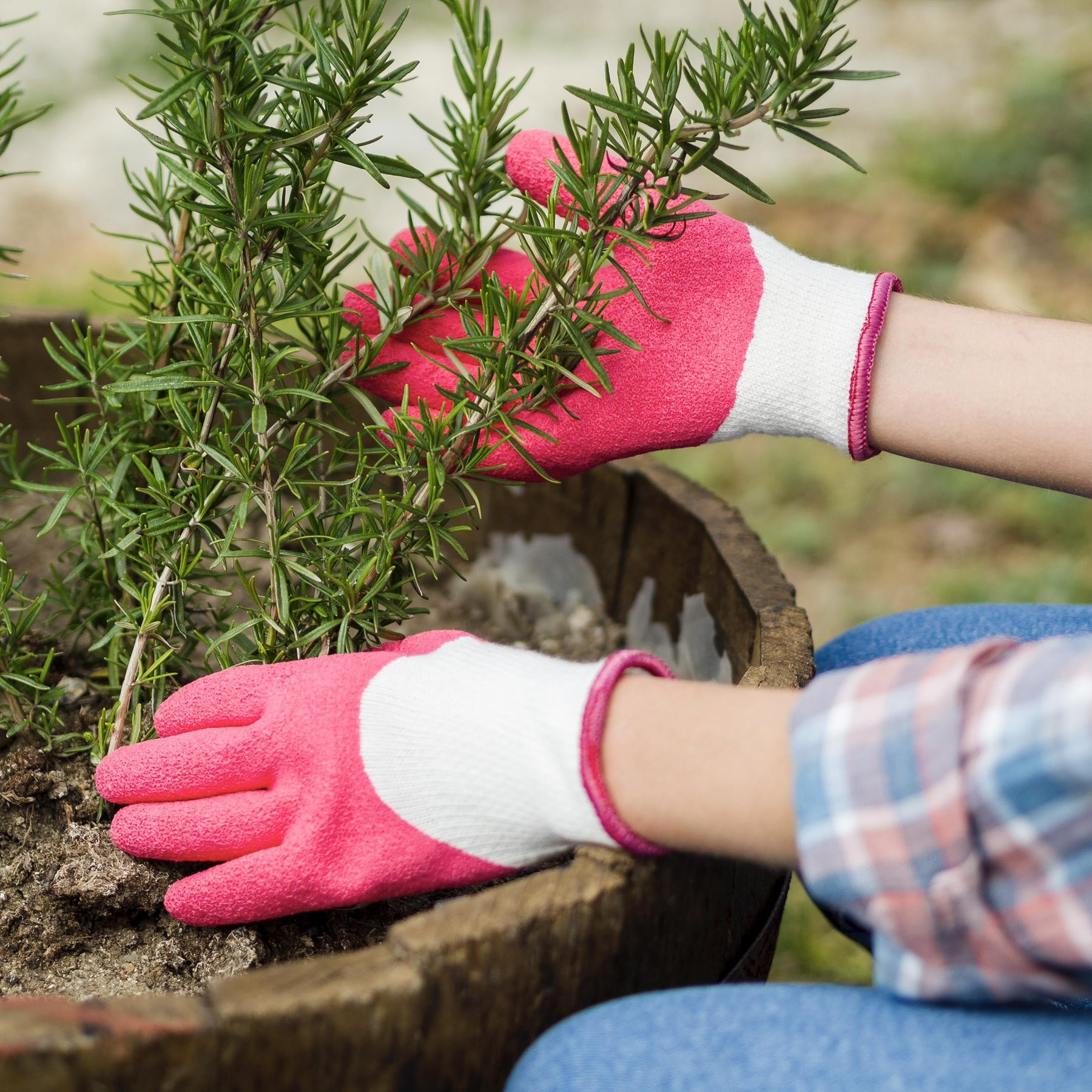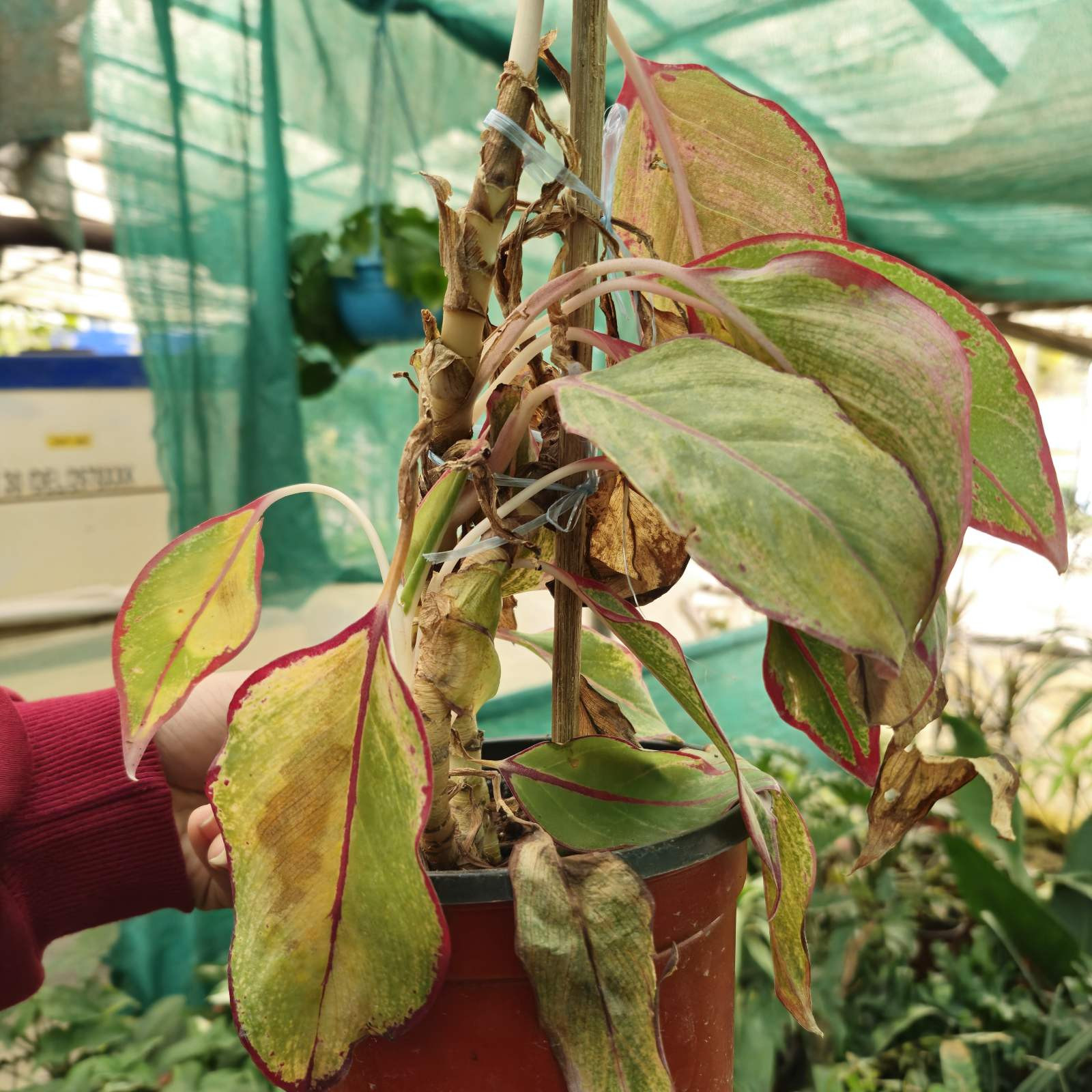No Products in the cart.
How to Care for Calathea (Prayer plant): Take Care Guide
At "I am the Gardener Fest 2024," the most frequent question at our registration desk was unexpectedly different. Instead of asking why we needed so much information or what the benefits of registering were, customers were fascinated by the stunning Calathea with beautiful white flowers displayed on our desk. Many attendees were Calathea enthusiasts but they were struggling with caring for their plants.
Calathea plants, native to the tropical regions of the Americas- particularly Brazil, Central America, and the West Indies- are members of the Marantaceae family, which also includes the related genus Maranta. These plants typically feature large, oval-shaped leaves adorned with various colors and patterns, such as stripes, spots, or gradients. The leaves can be green, purple, red, or variegated, often velvety or iridescent.
Calatheas are slow-growing plants, so don’t worry if they stay the same size for a long time. Not only are they non-toxic, but they are safe for all members of the family, including curious pets and youngsters.
Calathea plants are also known as prayer plants due to their unique capacity to move throughout the day. With a special characteristic known as nyctinasty, the Calathea may lift its leaves at night and drop them during the day to absorb more light.
Calathea Take Care Guide
Calatheas require specific care to thrive. So, here is a comprehensive guide on how to have gorgeous and healthy Calathea growing at home.
Lighting
Calatheas thrive in bright indirect sunlight, but their delicate leaves have a high water evaporation rate, making them intolerant of intense or direct sunlight. Exposure to such light conditions can quickly deplete leaf moisture, leading to brown, crispy edges. Additionally, Calatheas will fold their leaves if exposed to overly bright light, a clear sign they need more shade.
To ensure your Calathea stays healthy, place it in a location that receives 4 to 5 hours of bright, indirect light. If you notice signs of stress from too much light, such as browning edges or leaf folding, move your plant to a shadier spot. Calatheas can tolerate some shade, and this adjustment will help maintain their vibrant foliage and overall well-being.
Watering
Calatheas prefer consistently moist soil without being waterlogged. It is best to water the soil sparingly but frequently during the spring through summer to keep it uniformly moist. In the fall and winter, reduce watering frequency to every 2-3 weeks, as the plants will be growing more slowly. Allow the top inch or two of the soil to partially dry out between waterings. To check soil moisture, stick your finger into the potting mix up to the second knuckle; if it feels dry, it's time to water. Water on the leaves should be avoided as this can encourage fungal problems. So, try to water directly into the soil.
Minerals like fluoride, chlorine, and sodium are used to clean the tap water so avoid using tap water for Calatheas as they are sensitive to these minerals, which can build up inside the plant especially the tips of the leaves leading to leaf-tip burning or turning brown. To prevent this problem, use distilled, purified, filtered water or rainwater. An alternative method is to store tap water in a container and leave it outside for 24 to 48 hours before using it to water your plants. This will make most of the chemicals disappear.
Monitoring soil moisture and adjusting watering as needed is key to keeping Calatheas healthy and happy. With the right watering routine, they can maintain their vibrant, eye-catching foliage.
Humidity
Calatheas thrive in humid environments, ideally ranging from 40% to 60%, which helps preserve their attractive appearance. So misting the leaves regularly or placing the plant on a pebble tray can help increase humidity or consider a humidifier. Bathrooms are an excellent location for Calatheas, as they naturally offer the humid atmosphere these plants love. Dry air can cause the leaf edges to turn brown and crispy.
Temperature
Calathea plants have specific temperature requirements that are important to understand for their optimal growth and well-being. Calatheas thrive in warm, humid environments with temperatures between 65°F to 85°F (18°C to 29°C). This temperature range closely mimics the tropical and subtropical conditions where Calatheas naturally grow.
Calatheas are highly sensitive to abrupt or extreme temperature fluctuations, which can induce significant stress and potential harm to the plants. Exposure to cold drafts, air conditioning systems, or heating vents can result in issues such as leaf curling, browning, or even plant death.
Prolonged exposure to temperatures below 60°F (15°C) can cause the leaves to wilt, discolor, or even start to rot and temperatures above 90°F (32°C) for extended periods can cause the leaves to scorch, wilt, or drop prematurely.
By understanding and maintaining the appropriate temperature range for Calatheas, you can help ensure their lush, vibrant foliage and overall long-term health. Monitoring and adjusting their environment as needed is crucial for these sensitive, tropical plants.
Soil
Calatheas thrive in a well-draining and nutrient-rich soil, a mix of coco-peat and perlite works well. They prefer slightly acidic soil with a pH range of 5.5 to 6.5, helping plants to absorb essential nutrients better. Soils that are too alkaline (above pH 7.0) can lead to nutrient deficiencies and stunted growth.
Proper drainage and aeration are essential for Calathea's health, as they are prone to root rot and other moisture-related issues. Adding perlite, vermiculite, or small wood chips can enhance soil structure and improve airflow around the roots.
Potting and Repotting
When potting a new Calathea, it's important to handle the plant with care. Begin by gently removing the plant from its current container and carefully loosen any compacted or circling roots. Then, place the plant in the new, slightly larger pot and fill in the gaps around the sides with the prepared, well-draining potting mix, taking care not to pack it down too firmly. After potting, water the plant thoroughly to help the soil settle.
Calatheas should be repotted every 12 to 24 months, depending on the plant's growth rate, and the best time to do this is during the spring or early summer when the plant is actively growing. When repotting, only increase the pot size by 2 to 3 inches in diameter to avoid overpotting, which can lead to issues. By following these steps, you can help ensure the continued health and vigor of your Calathea plants.
Fertilizing
Calatheas thrive with a balanced, water-soluble fertilizer formulated for houseplants or tropical foliage.
During the active growing season of spring and summer, feed Calatheas every 2-4 weeks with a diluted fertilizer solution. Reduce this to monthly applications in fall and winter as their metabolism slows down and need low nutrients. You need to follow the package instructions for proper dilution rates.
Fertilizers should be applied directly to the soil, avoiding the leaves. Then, thoroughly water the plant after fertilizing to help the nutrients absorb into the soil and reach the roots. You have to ensure the soil is moist before fertilizing to prevent root burn from dry conditions. Overfertilization can also cause issues like leaf burn and stunted growth. So, be careful!
Trimming Yellow or Brown Leaves
When you see your leaves yellow or brown, trim the leaves as needed to maintain the aesthetic appearance of your plant and also to keep them healthy. Trimming dead and damaged leaves not only keeps your plant looking tidy but also encourages healthy growth. Clean, sharp scissors or pruners should be used to make clean cuts, avoiding tearing the leaves.
Cleaning Leaves
It is essential to keep Calathea plants clean for their beautiful appearance. The large leaves of Calathea can accumulate dust over time, which can inhibit the plant’s ability for effective photosynthesis, leading to discoloration and a decline in foliage’s health and appearance. To avoid this problem, gently wipe down the leaves with soft, damp clothes. Remember to handle the delicate leaves with care.
Common Pests
Numerous pests can harm Calathea plants significantly, both in terms of health and appearance, if they are not controlled. Maintaining the health of your Calathea requires careful and watchful pest control. The common pests to watch out for Calatheas are Spider mites, Mealybugs, Scale insects, and Thrips.
The most problematic one is Spider mites which feed on the undersides of leaves and can quickly spread and severely damage the plant if not addressed promptly.
To manage these pests, you need to inspect your plants regularly, and if you notice any pests, act quickly to address the issue like using insecticidal soap, neem oil, or other plant-safe pesticides.
Your Calathea's natural defenses against pests can be strengthened by maintaining optimal plant health through appropriate fertilization, watering, and environmental conditions.
Conclusion
To sum up, Calathea plants can be a rewarding addition to any indoor garden, but they do need some extra attention and care. You can appreciate the beauty of these tropical plants in your own house for many years to come if you give your Calathea plants the right care. Happy Gardening!





